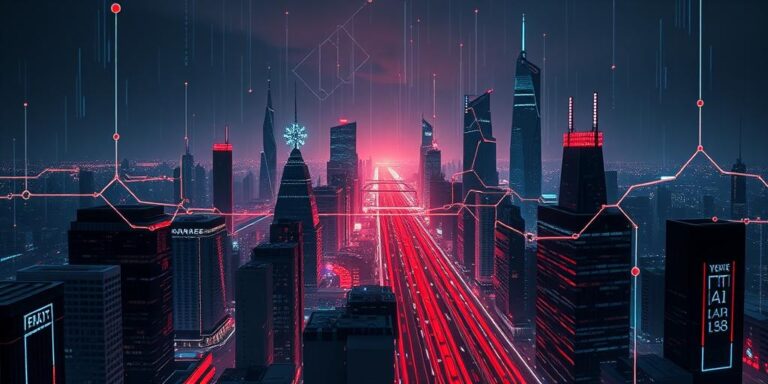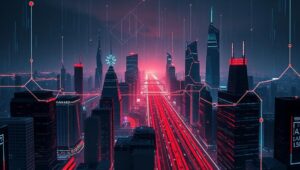The Weaponization of AI in Cyber Attacks (2025 and Beyond)
Artificial intelligence (AI) is rapidly transforming various aspects of our lives, from healthcare and finance to transportation and entertainment. However, this powerful technology also presents a growing threat in the realm of cybersecurity. As we move towards 2025 and beyond, the weaponization of AI in cyber attacks is becoming an increasingly concerning reality.
The Rise of AI-Powered Cyber Attacks
AI is being used by cybercriminals to enhance the sophistication, speed, and scale of their attacks. Traditional security measures, which rely on human analysis and rule-based systems, are struggling to keep pace with these advanced threats. Some key areas where AI is being weaponized include:
- Automated Vulnerability Discovery: AI algorithms can scan networks and systems to identify vulnerabilities much faster and more accurately than traditional methods. This allows attackers to exploit weaknesses before they are patched.
- AI-Driven Malware: AI can be used to create self-learning and adaptive malware that can evade detection by traditional antivirus software. These AI-powered malware strains can modify their code in real-time to avoid signature-based detection.
- Phishing and Social Engineering: AI can analyze vast amounts of data to create highly targeted and personalized phishing campaigns. These AI-driven phishing attacks are more convincing and difficult to detect, increasing the likelihood of success.
- Deepfake Technology: AI-generated deepfakes can be used to impersonate individuals, spread misinformation, and manipulate public opinion. This can have serious consequences for businesses, governments, and individuals.
- Autonomous Hacking: AI can automate many aspects of the hacking process, allowing attackers to launch attacks with minimal human intervention. This can lead to a significant increase in the volume and speed of cyber attacks.
The Impact of AI-Driven Cyber Attacks
The weaponization of AI in cyber attacks has far-reaching implications for individuals, organizations, and governments. Some potential impacts include:
- Increased Financial Losses: AI-powered cyber attacks can lead to significant financial losses for businesses, including theft of funds, disruption of operations, and reputational damage.
- Data Breaches and Privacy Violations: AI-driven attacks can compromise sensitive data, leading to data breaches and privacy violations. This can have serious consequences for individuals and organizations.
- Critical Infrastructure Attacks: AI can be used to target critical infrastructure, such as power grids, transportation systems, and communication networks. This could lead to widespread disruption and even loss of life.
- Political Instability: AI-driven disinformation campaigns and deepfakes can be used to manipulate public opinion and undermine democratic processes. This could lead to political instability and social unrest.
Defending Against AI-Powered Cyber Attacks
To defend against the weaponization of AI in cyber attacks, organizations and governments must adopt a multi-layered approach that includes:
- AI-Powered Security Solutions: Deploying AI-powered security solutions that can detect and respond to AI-driven threats in real-time. These solutions can use machine learning to identify anomalous behavior and predict future attacks.
- Proactive Threat Hunting: Implementing proactive threat hunting programs that use AI to identify and neutralize potential threats before they can cause damage.
- Employee Training and Awareness: Educating employees about the risks of AI-driven phishing attacks and social engineering.
- Robust Security Policies and Procedures: Implementing robust security policies and procedures that are designed to prevent and detect AI-driven attacks.
- Collaboration and Information Sharing: Fostering collaboration and information sharing between organizations, governments, and cybersecurity experts.
The Future of Cybersecurity
The weaponization of AI in cyber attacks is a serious and growing threat. As AI technology continues to advance, we can expect to see even more sophisticated and dangerous attacks in the future. To stay ahead of the curve, organizations and governments must invest in AI-powered security solutions, proactive threat hunting programs, and employee training and awareness. By working together, we can mitigate the risks of AI-driven cyber attacks and ensure a more secure digital future.
Long-tail keywords:
- AI-powered cybersecurity threats 2025
- Defending against AI cyber attacks
- Future of AI weaponization in cybercrime




